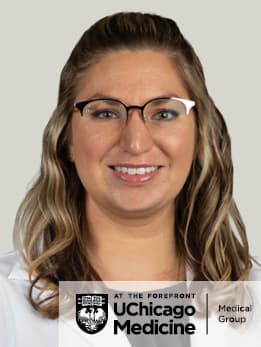ADHD in children: Symptoms, screening and diagnosis
Whether it’s daydreaming, constant fidgeting, or nonstop talking, many parents are familiar with the symptoms associated with attention-deficit/hyperactivity disorder (ADHD).
This condition affects millions of children, yet plenty of misconceptions still surround it, including how it is diagnosed and how it can impact children.
As a pediatrician, I care for and diagnose children with ADHD. These children often struggle with outbursts at home or school and may be labeled as “poor learners” or “bad kids.”
This negative labeling is unfair and can lead to a detrimental “snowball effect.” The child becomes understandably frustrated and may have frequent meltdowns because they cannot control their behavior. This can lead to "misbehavior," low self-esteem, poor relationships with peers, and even anxiety and depression.
Thankfully, by promoting positive behaviors and familiarizing yourself with the wide array of ADHD resources, therapies, and tools, there are many ways to set children with ADHD on a path to success.
What is ADHD?
ADHD is a common syndrome that impairs daily functioning on multiple levels through the core symptoms of inattention and/or hyperactivity. It is usually diagnosed in childhood and can continue into adulthood.
Examples of symptoms associated with the disorder include:
- Trouble focusing
- Difficulties sitting still
- Impulsivity
In addition to the cognitive impacts, ADHD can affect a child academically, behaviorally and emotionally.
Symptoms are present in multiple settings and are often noticed by a parent, family member, teacher, or other caregiver. For a child to be diagnosed with ADHD, symptoms must persist for at least six months.
What are the different types of ADHD?
There are three main subtypes of ADHD:
- Inattentive
- Hyperactive/impulsive
- Combined (symptoms from both other subtypes)
Children with the inattentive subtype are often referred to as “daydreamers." They have difficulty paying attention inside and outside of the classroom. They are often distracted, make careless mistakes, and may frequently lose objects. When an adult addresses an inattentive child, it may seem the child isn't listening.
In contrast, children with hyperactive/impulsive ADHD feel the need to move constantly and appear as if they are “run by a motor.” They often have trouble sitting still and may fidget constantly or seem restless. Parents may notice a youngster has difficulty with playing quietly, or waiting turns when talking.
A child can also have ADHD combined subtype. These children have a varied intensity of both inattentive and hyperactive symptoms. As they grow older, their symptoms can evolve (they can initially have more hyperactive symptoms and develop more inattentive or impulsive symptoms in adolescence.)
On average, hyperactive symptoms are noticed around ages 4 to 5 while inattentive symptoms may be identified later, by the time a child is 8 to 9 years old.
How is a child diagnosed with ADHD and who is involved in the process?
Diagnosing ADHD is a team effort, but a pediatrician can help start the process by providing screening tools and addressing any questions.
An ADHD screening tool can identify symptoms in multiple settings. It can be completed by caregivers, including family members, teachers, and coaches, to assess symptoms over the past several months.
One popular screening tool is the National Institute for Children’s Health Quality (NICHQ) Vanderbilt Assessment Scale.
This questionnaire usually gathers information about a child’s symptoms from the parents' and teachers' perspective, but it can be distributed to multiple sources, including grandparents, coaches, and day-care moderators.
This tool serves as a great way to identify the severity of symptoms in a child’s behavior over the last six months. It can also screen for symptoms of other conditions that may coexist with ADHD, including oppositional-defiant disorder, conduct disorder, anxiety, and depression.
Once screening has been performed, the pediatrician conducts a full evaluation to make a diagnosis. They look at key components such as:
- Family medical history
- Social stressors
- Height and weight
- Vision and hearing
- Coordination
- Communication skills
Many medical conditions can be mistaken for ADHD due to similar symptoms. Pediatricians can identify these differences and refer to pediatric specialists when needed.
For instance, experts in developmental and behavioral pediatrics or neuropsychology may be helpful if a child is showing signs of autism or a learning disorder.
What resources are there for children diagnosed with ADHD and struggling in school?
There are two modalities used for creating accommodations in school – the Individualized Education Plan (IEP) and the 504 plan.
An IEP is covered under the federal law – The Individuals with Disabilities Education Act (IDEA). This plan serves as a written blueprint for a child’s special education experience and is specific to the services and accommodations the school needs to provide. It includes learning goals for the child.
To receive an IEP, the child needs to have one of the 13 disabilities listed in IDEA, and the disability must affect their ability to learn from the general education curriculum.
If a child does not meet the requirements for an IEP, a 504 plan can provide support for them. This plan is from Section 504 of the Rehabilitation Act of 1973 and is for a child with any disability that interferes with their ability to learn.
This plan does not have to be written, but must specifically mention the accommodation and who is responsible for providing it. For example, a 504 plan can include increased time for testing, increased behavioral health services, or even speech or occupational therapies at school.
Both of these resources are reviewed yearly and are free. Parents can request them directly through the school district.
Furthermore, ADHD can be managed in a variety of ways including medication, behavioral therapies, and counseling in addition to education services. A pediatrician and other specialists can create a treatment plan tailored to the needs of the child that promotes self-esteem and success.
*Christine Kazlauskas, MD, is a UChicago Medicine Medical Group provider. UChicago Medicine Medical Group is comprised of UCM Care Network Medical Group, Inc. and Primary Healthcare Associates, S.C. UChicago Medicine Medical Group providers are not employees or agents of The University of Chicago Medical Center, The University of Chicago, or UChicago Medicine at Ingalls - Calumet City.

Christine Kazlauskas, MD*
Pediatrician Christine Kazlauskas, MD, treats kids of all ages with injuries, illnesses and other health conditions, such as flu, COVID-19, ear infections, sprains, strains, ADHD, autism and developmental concerns.
Quality and Convenient Pediatric Primary Care

Schedule Online
Book a pediatric primary care appointment online right away from the comfort of your mobile device.

Set Up A Pediatric Video Visit
Save time by skipping the trip to the doctor's office and video conference with your provider instead.

Request an Appointment
Don’t have time right now? Submit an appointment request form and we’ll call you back within two days to schedule an appointment.
